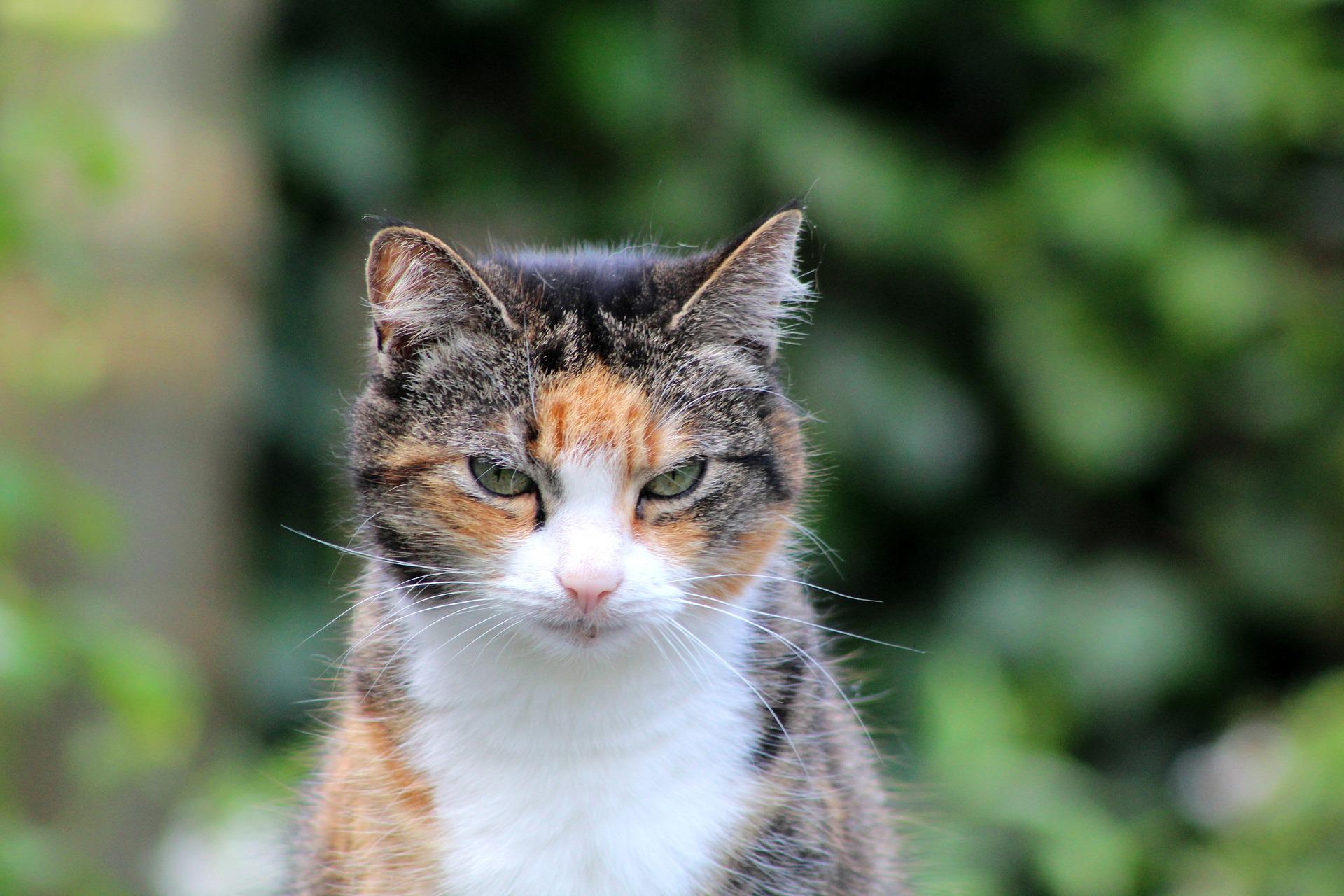
Hyperthyroidism in cats
What is hyperthyroidism?
Hyperthyroidism is a disease most commonly affecting older cats, although rarely this can affect younger cats too.
Cats with this disease have excess thyroid hormone in their blood, which is caused by overproduction of thyroid hormones (thyroxine, or T4, and triiodothyronine, or T3) from the thyroid glands, which are found in the neck close to the trachea (windpipe).
Thyroid hormones play an important role in regulating metabolism and help to maintain the health of the heart and other muscles, digestive system, kidneys, and liver.
What causes hyperthyroidism?
Around 98% of cases are caused by a benign (non-cancerous) change in which either one or both thyroid glands in the neck increase in size (known as nodular hyperplasia). The remaining 2% of cases are caused by a malignant (cancerous) tumour called a thyroid adenocarcinoma.
Signs and symptoms
There are a range of symptoms which may indicate that your cat could have hyperthyroidism:
- Weight loss despite a normal or increased appetite
- Behavioural changes, most notably your cat may seem “angrier” or more easily irritated
- Increased activity or vocalisation
- Poor coat quality
- Polydipsia (being thirstier and drinking more)
- Polyuria (urinating more)
- Less tolerant of heat (may seek out cooler areas)
- Increased heart rate
- Mild to moderate vomiting and/or diarrhoea
It is important to note that around 30% of cats do not display any clinical signs of hyperthyroidism, so bringing your cat for regular health checks with the vet is recommended, especially if they are older.
Consequences of hyperthyroidism
If left untreated, hyperthyroidism can lead to complications with other body systems, which may result in your cat becoming very unwell. A serious complication of this disease is hypertension (high blood pressure) which can lead to damage of several other organs including the heart, kidneys, liver, eyes, and brain. In some cases, untreated hyperthyroidism can lead to heart failure.
Diagnosis
Hyperthyroidism can be diagnosed by a simple blood test that measures serum total T4 concentration, which can be done during any routine health check appointment. At Greenbay Vets, we can run the test on the same day as taking the blood sample, so one of the vets can telephone you later in the day with the results.
Treatment
There are several options available if your cat is diagnosed with hyperthyroidism. Regardless of treatment option, if diagnosed early and treated promptly, signs of the disease can usually be reversed, and your cat can continue to live comfortably.
Dietary management
Iodine is required to make thyroid hormones. Diets specifically designed for cats with hyperthyroidism, such as Hills y/d, contain low levels of iodine and are clinically proven to support thyroid health if the cat is fed this food exclusively. This treatment method works best for indoor cats as it is easier to monitor and control their diet. Iodine controlled diets are only available from veterinary practices and should be trialled for a minimum of 2-3 weeks before re-testing serum T4 levels.
Medical management
Anti-thyroid drugs are available in tablet or liquid form and are an effective way of managing hyperthyroidism. These drugs do not provide a cure for the disease but do control it well if they are given daily (sometimes twice daily). If given correctly, medication can help to reverse signs of hyperthyroidism and improve your cat’s quality of life. As with any medication, these drugs can come with side effects. However, medical management of the disease is common, and the vets will be able to discuss any potential concerns you may have should your cat require treatment.
Surgical thyroidectomy
A thyroidectomy is a surgical procedure involving complete removal of the thyroid gland(s). It is possible that this procedure can successfully provide a long-term cure for the disease, but previously unaffected tissue that is left behind may undergo changes, leading to recurrence of hyperthyroidism in the future and further surgery being necessary. As with any surgery, this procedure comes with a list of risks and complications. The vets will be able to discuss this with you, should your cat require a thyroidectomy. Once done, this treatment method is irreversible, and your cat may still require long-term medication.
Radioactive iodine therapy
This treatment method is considered “gold standard” as in around 95% of cases, hyperthyroidism can be cured. This treatment involves a subcutaneous (into the skin) injection of radioactive iodine, which targets abnormal thyroid tissue and destroys the cells. Radioactive iodine is only taken up by abnormal tissue, so healthy tissue is not affected. This treatment is also relatively quick and painless, as after the initial injection, your cat simply boards at the hospital facility until the isolation period is over.
Radioactive iodine therapy involves referral to a specialist hospital facility, where your cat needs to remain for a period of around 2 to 4 weeks. During this time, you are not able to visit your cat due to them becoming radioactive after treatment. For more information on this treatment method, please speak to one of the vets.
Contact us
If your cat is displaying any signs of hyperthyroidism, you have any concerns about anything in this article, or if you would like to book them in for a health check with a vet, please telephone the practice on 01803 606059/843836 or book online.
